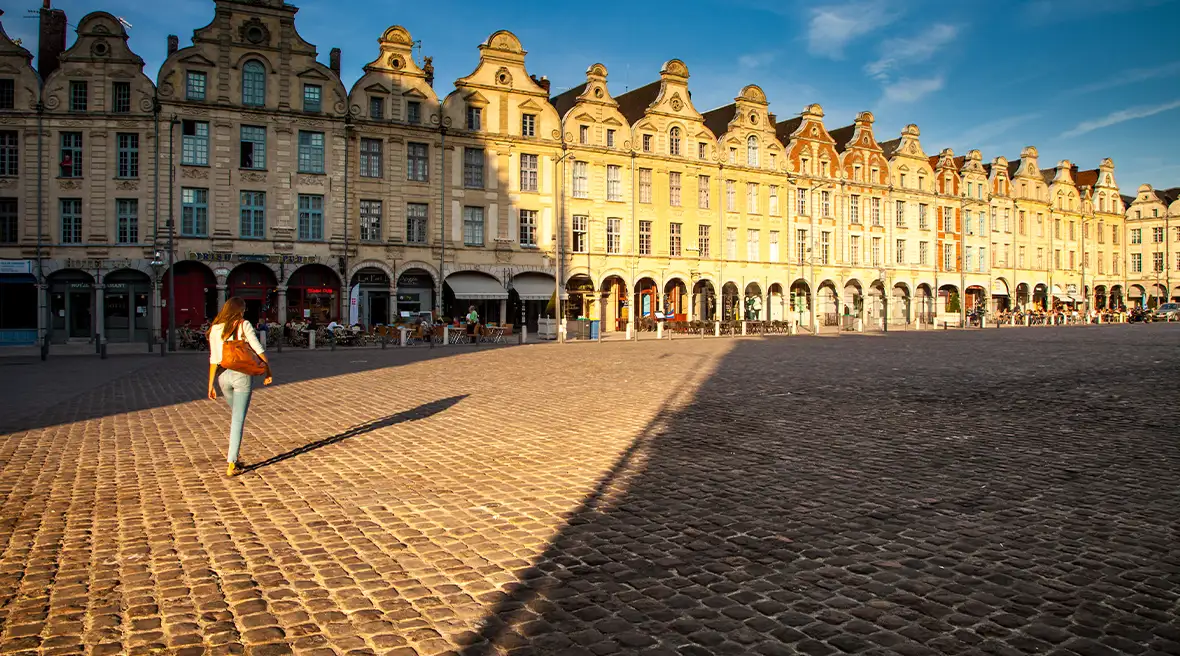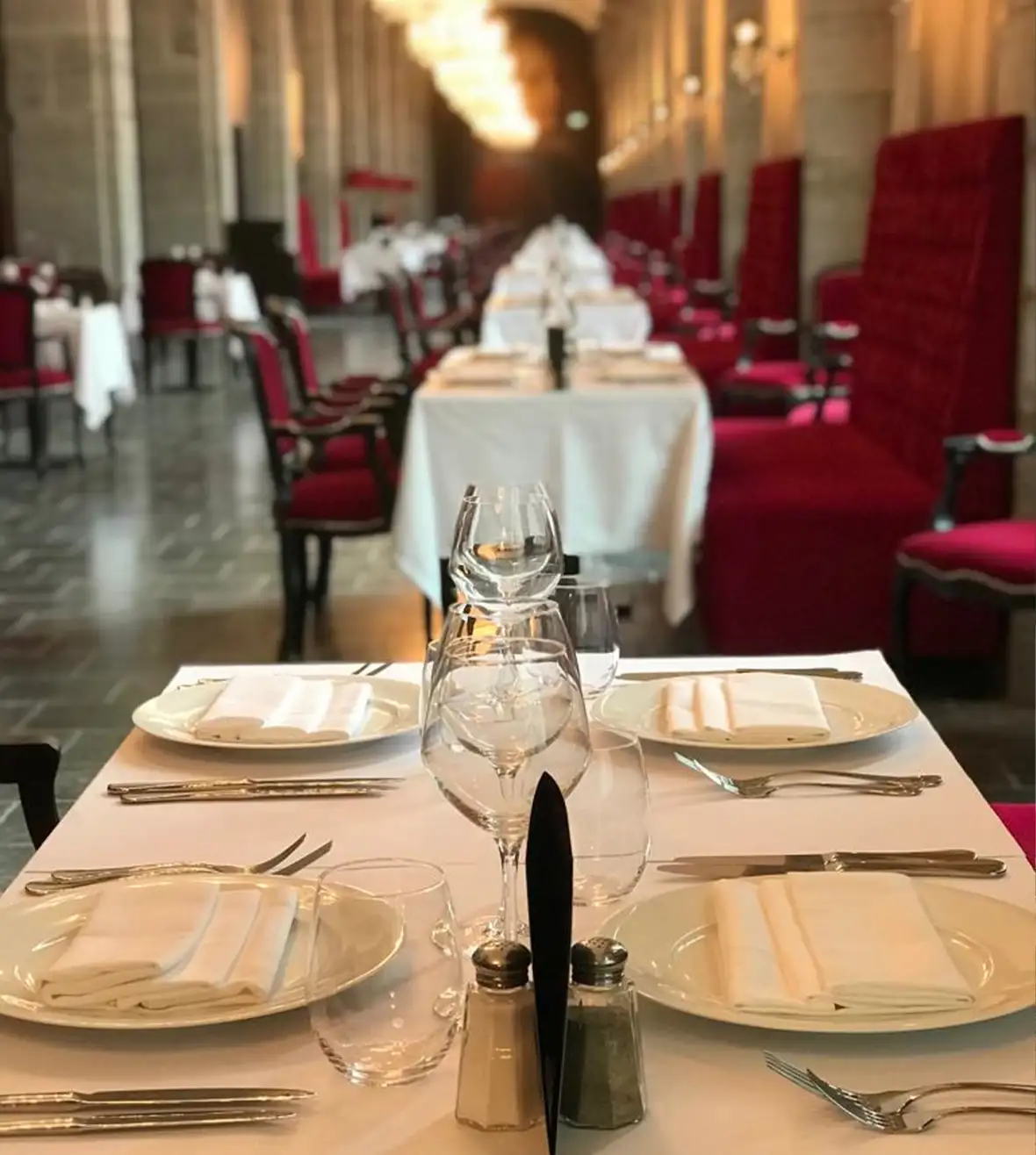Discover mining and dining in Northern France

Lucy Shrimpton embarks on a weekend driving tour, finding both hidden histories and innovation on the coal mining landscapes of Northern France.
A mere 100 minutes after driving away from the LeShuttle terminal in Calais, I’m underground, sporting a yellow hardhat and peering into a canary cage whose dummy inmate ─ for dramatic effect one assumes – ain’t half looking peaky.
I’m actually agog at a fascinating side to French history I confess I never even knew existed, and here, in this dark and evocative coal mine between Arras and Valenciennes, I’m surrounded by Davy lamps, picks, coal-wagons and the like, just guessing at the harsh conditions endured by generations of mining men, women and children in France.

Bringing mining heritage back to life
Happily, I don’t have to rely on imagination alone: I’m at France’s flagship Centre Historique Minier mining museum in Northern France ─ a little like Big Pit in South Wales ─ where bountiful state-of-the-art displays take you not only on a geological journey but also reveal all the fixtures of daily life in a mining community.
I’m mostly transfixed by the life-size photographs of miners mining, stark eyes all the starker for the wholly blacked-out faces, and gazing up at the miners’ overalls – suspended in mid-air just as they would have been post-shift – you can almost hear disembodied voices floating in the now eerily silent air.
Regeneration of the Northern France landscapes

And it’s not just collieries you can visit here either. If you were wondering what the black mountains are that punctuate the Northern France landscape, they’re actually coal slag heaps (terrils in French), but rather than the industrial detritus you might picture in the mind’s eye, they have been innovatively resurrected, some into nature and leisure reserves you’d be hard-pushed to recognize as slag heaps were it not for the crunch of schist underfoot.
The slag heaps of Rieulay, best discovered incidentally by e-bike, have even been sought out as prime locations by artisan foodie start-ups, as at Les Chevrettes du Terril, a cool-vibes goat-farm.

Producing organic goats’ cheese on site, funky frères Julien and Olivier ─ on a quest for an altogether greener and more fulfilling lifestyle than their former office jobs afforded ─ are not alone. Attracted by the spirit of the northern people (or ch’tis as they are called) and the creative vibe in Northern France, young people are settling here in their hordes.
Feeding the friendly goats, trying a beer or cheese at the tastings bar and submitting your very own goat-name suggestion (” … something original and humorous, with a local reference” stipulates Julien) is all part of the feel-good visitor experience here.
UNESCO-listed
On the world stage with the likes of Mont St-Michel and Pont du Gard, the ‘Nord-Pas de Calais Mining Basin’ has been awarded the ultimate prestigious award for heritage – UNESCO status. And whether you’re looking at Northern France’s coal mining region from a geological, architectural or historical perspective, or you just like the sound of exploring something new and off-the-beaten track, you can either embark on an immersive mining trail or mix and match the mining sites with other points of interest in Northern France: WW1 cemeteries, museums and memorials (Wilfred Owen’s is near here), the stunning squares of Arras or art visits like the Matisse Museum and the Louvre in Lens, state-of-the-art offshoot of the Paris original.

Local food and drink
French markets are a chance to observe the hustle-and-bustle of what the French do best (food, food, food!), and Valenciennes’ market, sprawling across Place Verte on a Saturday, is no exception. The beauty of travelling by LeShuttle is that you can fill your boots and fill your boot, taking all the goodies home! Leave space for a Flamiche au Maroilles, a rich tart made with strong local cheese ─ the shrink-wrapped version a good idea if you want to avoid pungent wafts on your return journey.
If the fuel of the land was coal, the fuel of the folk was beer. There’s been a big craft beer boom around here of late, filling local glasses with quality, character and flavour, and one of the best brews is at Brasserie d’Amblise in Crespin. Cantona-esque Reynald – himself a miner’s son – invites visitors in for tastings and take-homes with the classic warmth of the north.

Where to eat and sleep in Valenciennes
For super-swanky, there’s the über-chic Royal Hainaut Spa and Resort hotel in a sprawling former convent – a choice of two elegant restaurants - or if off-the-scale quirk appeals, search up Maison d’Hôtes Le Grand Duc, once the home of the Anzin mining director. It’s a boutique B&B plastered with unusual and vibrant artworks, and you can dine in too.

About the author: Lucy Shrimpton
Off-piste childhood holidays, studying languages, and a keen sense of place all shaped Lucy’s career move to travel writing, her destinations of choice primarily in the UK, France, and the Netherlands. She compensates for a “poor sense of navigation” by drawing a rudimentary map wherever she goes, ‘X’ marking the spot for the best coffee and culture stops.